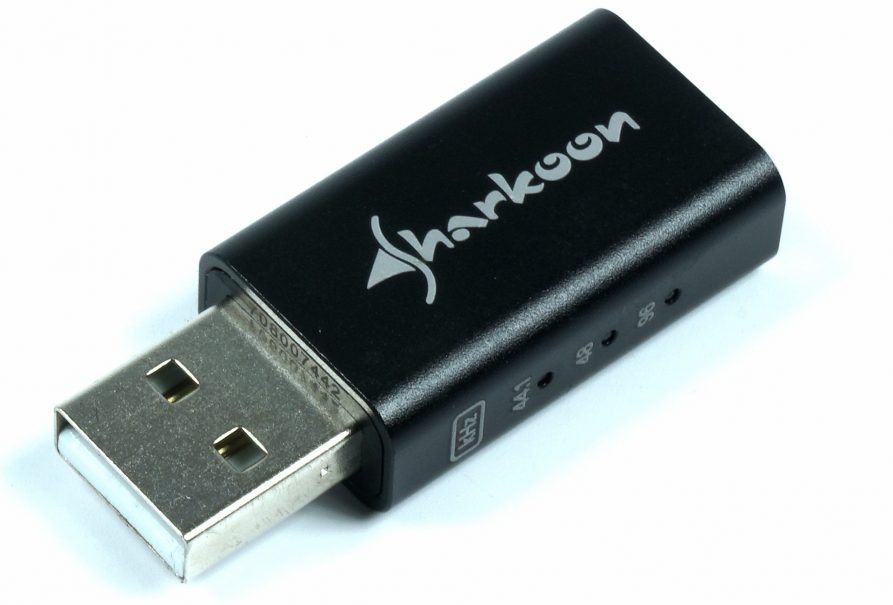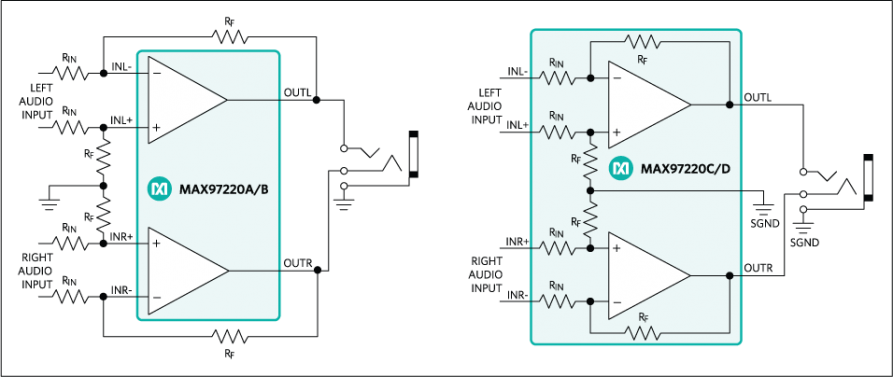 A USB sound solution with a decent DAC, microphone input and extra headphone amplifier for less than 30 euros? Dreaming on, I thought until I found exactly that here: the Sharkoon Gaming DAC Pro S. Now, of course, Sharkoon hasn't reinvented the audio navel of the world, but has fished an OEM on land that has a remarkable combination of DAC and real amplifier in press a USB stick. Big sound for small money? This is almost crying out for a laboratory test!
A USB sound solution with a decent DAC, microphone input and extra headphone amplifier for less than 30 euros? Dreaming on, I thought until I found exactly that here: the Sharkoon Gaming DAC Pro S. Now, of course, Sharkoon hasn't reinvented the audio navel of the world, but has fished an OEM on land that has a remarkable combination of DAC and real amplifier in press a USB stick. Big sound for small money? This is almost crying out for a laboratory test!
Delivery
The stick comes in a nice box with a little Asian air enclosed in it. A handbook is also included, but that's it. Driver? If you don't need any, the whole thing is simply Plug & Play. The world could be so simple if everyone handled it that way. Not an annoying firmware update software software, but simply plug in exactly. So it's kind of the one-night stand for headsets with the chance of a longer relationship.
Optics, haptics and functionality
Now the Sharkoon Gaming DAC Pro S is not a complete reinvention, but it is a version of the used OEM adapted for the non-Asian market. This includes above all the narrow embroidery shape of the dongle and the valuable case with an outer shell made of aluminium. The insert with the board, which carries the USB plug and the 3.5 mm multifunction jack (TRRS), is glued and not lossless. But you generally don't want that.
Plug & Play instead of overloaded extra software with registration and annoying updates – this concept will certainly work if the buyer in question wants to and can do without software equalizers and the usually annoying 7.1 surround copy. Because this part is honest and also generates enough pressure to relentlessly expose every nasty headphones and make them look really old. In return, even high-end headphones are quite fun. And that for a total of 30 euros! I really have to repeat this: thirty.
The multifunction jack (TRRS) can operate both normal stereo headphones and the 4-pole connectors with additional microphone output. If you only have a normal headset with two 3.5 mm jack plugs, you can of course also get a Y-adapter, conveniently even directly from Sharkoon as an accessory. I used my private Beyerdynamic Amiron Home for the tests here in the lab, which I use almost daily. Therefore, the subjective hearing test is not too difficult to compare.
Resolution, sampling rate and technical details
The DAC offers a resolution of 24 bits and a maximum sampling rate of 96 kHz. Sounds too little? Translated for laymen, this means nothing more than theoretically possible 144 dB dynamic range and a frequency range from 1 Hz to 48 kHz. If one uses the maximum possible sampling rate of 96 kHz, then the antialias and reconstruction filters no longer have to be so extremely steep flanked and thus invasive, which is enormously important.
This does not extend the audible frequency space, but the gentler, non-invasive design of the filters allows you to avoid distortions and phase errors. The reproduced sound thus becomes much better. Everything above the sampling rates of 96 kHz then becomes hi-fi for bats anyway and thus the HiRes audio logo on the box is explained, even if the sense of the higher sampling rate here is a completely different one. The theoretically achievable 48 KHz upper limit for the frequency range is actually only a side effect, which one likes to take with you.
This is not for the gold ear number seven, but it is easy enough for almost all sources and the usual Otto normal listeners more than enough. Windows is set to 48 kHz sampling rate by default anyway and I am very sure that few people even know where to get the supplement to 96 kHz at all and for which it is good in the end. To do this, you have to switch to the Windows Control Panel and then to the properties of the playback device.
The three LEDs on the side of the stick then automatically display the selected sampling rate. But with good headphones, it's certainly worth adjusting these 96 kHz.
And what did Sharkon actually use? With the BES3100, the manufacturer relies on an honest and affordable DAC from BESTECH from Shanghai. The chip is classic OEM goods and is now also found in various other products where a good P/L ratio is the focus. In addition to the actual DAC, it also offers an analog input for the microphone including the ADC, as well as a rudimentary DSP. Unlike C-Media budget chips or ESS solutions, the BES31000 does not include a headphone amplifier. And that's a good thing!
For this, you prefer to use the MAX97220A from Maxim Integrated, a cheap but good headphone amplifier IC, which has a decent signal noise ratio and even a flexible (!) Gain. This ensures that the output voltage remains constant over a wide range. However, an integrated limiter drastically throttles the power below 16 ohms. For safety. The chip creates up to 3 volts RMS at 250 ohms at 5 volts power supply. In theory. Sharkoon has unfortunately throttled to 2 volts RMS here, which is probably due to a lower operating voltage of approx. 3 Volt.
Here again the technical data, even if the indication of the maximum power (sum of both channels) is not quite right. But also a little over 200 mW are enough. But I have the test for this:
As always, the user manual is also freely available on the house:
Manual
Sharkoon Gaming DAC Pro S







































Kommentieren